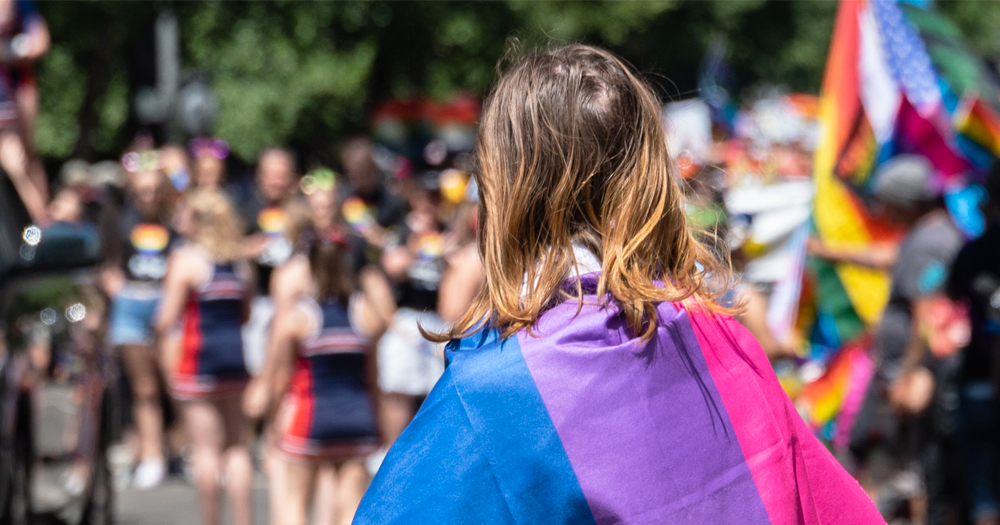Biphobia doesn’t exist in a vacuum. Like homophobia and transphobia, the micro incidents are part of a larger culture where hatred and disdain for LGBTQIA+ people is not only acceptable, but considered the norm. The ‘Who I Am’ study by researchers at La Trobe University in Melbourne, Australia found that the majority of bisexual, pansexual and other non-monsexual people (Bi+ people) experienced biphobia which negatively impacted their mental health because they feel that their sexuality is not understood or respected. Here are six misconceptions about bisexuality that contribute to biphobia.
Bisexuals are only attracted to binary genders
There is a lot of discussion around whether the bi in bisexuality refers only to cisgender women and cisgender men. It doesn’t. It also assumes that all bisexual people are cis, which isn’t true. The Bisexual Manifesto, first published in 1990, explicitly tells people to not “assume that there only two genders.”
Bisexuality is commonly described as the potential to be attracted to genders similar to and different from your own, as popularised by Robyn Ochs. It can also be described as attraction to two or more genders.
Bisexuality and pansexuality are distinct sexualities, but the exclusion or inclusion of trans and non-binary people is not what separates them. While bisexuality is attraction to people of the same gender as yourself and to different genders, pansexuality is attraction to all genders. Many pansexual people describe their attraction as being regardless of gender.
Bi+ people are only bi+ when dating people who are the same gender as their own
Our sexuality is not dependent on the gender or sexuality of the people we are in relationships with. I’m a bisexual woman married to a straight man, that he is straight does not make me straight. My bisexuality does not make him bisexual. The same applies to bi+ people who are are dating gay or lesbian people.
Our sexuality is our own.
Bisexuals are 50% gay and 50% straight
Bisexual people are bisexual. We are not half gay or lesbian and half straight. By viewing bisexuality this way, you are saying that bi+ people are not complete in our own right.
To return to Robyn Ochs definition of bisexuality , she explains the ways that attraction can differ by including “people of more than one gender, not necessarily at the same time, not necessarily in the same way, and not necessarily to the same degree.”
Bisexual people are all promiscuous cheaters
This misconception encompasses a few false beliefs about bi+ people. Namely that we are afraid of commitment, incapable of picking a side and that our attraction to multiple genders always happens at the same time making us unable to remain monogamous.
These things could be true for some bi+ people—and equally true for some gay, lesbian and straight people—but they are not true of the bi+ community as a whole.
To quote the Bisexual Manifesto again, “Do not equate promoiscuity, infidelity, or unsafe sexual behaviour with bisexaulity. Those are human traits that cross all orientations.”
Bisexuality is just a phase
Bisexuality is not a phase. Bi+ men are not all secretly gay. Bi+ women are not all really straight.
There are people who identified as bi+ and came out later as gay or lesbian. This does not invalidate bisexuality as a sexual orientation.
When I came out as bisexual, I was a lesbian. I didn’t consider being a lesbian a phase. For me, sexuality is fluid and mine evolved to include other attractions so I moved to bisexuality.
Bi+ erasure is a myth
Bi+ erasure happens all the time. When gay is used as a catch-all term for events such as Pride. When out bisexual people are suddenly seen as gay, lesbian or straight based on the gender or sexuality of their new partner. When we are told that we do not face difficulties or discrimination for being bi+.
When Bi+ Ireland launched the ‘We Exist’ series in 2017, a common theme was that while we experience erasure from gay, lesbian and straight people it hurts more when it comes from within the LGBTQIA+ community.
The most cited example of this was during the marriage referendum, when the focus was on equal marriage for gays and lesbians. Bi+, trans and non-binary people were excluded from the messaging and expected not to talk about how the referendum affected them personally while canvassing.
We are here. We are queer enough. We need support from the wider LGBTQIA+ community.
© 2020 GCN (Gay Community News). All rights reserved.
Support GCN
GCN is a free, vital resource for Ireland’s LGBTQ+ community since 1988.
GCN is a trading name of National LGBT Federation CLG, a registered charity - Charity Number: 20034580.
GCN relies on the generous support of the community and allies to sustain the crucial work that we do. Producing GCN is costly, and, in an industry which has been hugely impacted by rising costs, we need your support to help sustain and grow this vital resource.
Supporting GCN for as little as €1.99 per month will help us continue our work as Ireland’s free, independent LGBTQ+ media.
